Author: Matt Del Fiacco
A wide variety of cereal grains in many different forms are available to brewers for use in the production of beer. One such grain that is seeing an increase in popularity, especially in Pale Ale and IPA, is rye. While rye certainly has a history in many beer styles, notably the German style Roggenbier, its popularity has seen a revival in the American craft beer scene.
Like barley, rye can be malted in order to make the grain’s sweet resources available for use by brewers. By some reports, a grist containing just 5% rye malt can add a layer of complexity without contributing too much spicy rye flavor, while usage at upwards of 10-15% will be much more expressive. Due to a combination of possessing high beta glucan content, which increases viscosity, and the fact it has no husk, brewers using 20% or more of rye malt are cautioned to take measures to reduce the chances of stuck mash.
Rye malt is one of those grains that I’ve been peripherally aware of but had never actually brewed with. I used some flaked rye in an Imperial Stout once, primarily as a means to improve the beer’s body, but that’s it. Curious to learn more about this spicy grain and any potential complexity it might contribute to my beers, I decided to test it out for myself!
| PURPOSE |
To evaluate the differences between a beer made with rye malt and one made without rye malt that was otherwise identical.
| METHODS |
I often see Rye Malt being used in the context of an American Pale Ale, so that’s what I went with for this xBmt.
Caulfield
Recipe Details
| Batch Size | Boil Time | IBU | SRM | Est. OG | Est. FG | ABV |
|---|---|---|---|---|---|---|
| 5.5 gal | 60 min | 33.4 IBUs | 5.4 SRM | 1.053 | 1.012 | 5.4 % |
| Actuals | 1.053 | 1.013 | 5.3 % | |||
Fermentables
| Name | Amount | % |
|---|---|---|
| Pale Malt (Weyermann) | 9.75 lbs | 84.78 |
| Rye Malt (Weyermann) | 1.75 lbs | 15.22 |
Hops
| Name | Amount | Time | Use | Form | Alpha % |
|---|---|---|---|---|---|
| Pekko | 6 g | 60 min | Boil | Pellet | 15 |
| Pekko | 10 g | 20 min | Boil | Pellet | 15 |
| Pekko | 31 g | 5 min | Boil | Pellet | 15 |
| Pekko | 50 g | 3 days | Dry Hop | Pellet | 15 |
Yeast
| Name | Lab | Attenuation | Temperature |
|---|---|---|---|
| Flagship (A07) | Imperial Yeast | 75% | 60°F - 72°F |
Notes
| Water Profile: Ca 80 | Mg 2 | Na 10 | SO4 125 | Cl 62 |
Download
| Download this recipe's BeerXML file |
I threw together a single large starter of Imperal Yeast A07 Flagship a couple days ahead of time.
I started my brew day by turning on the elements to start heating the strike water I collected the night prior.
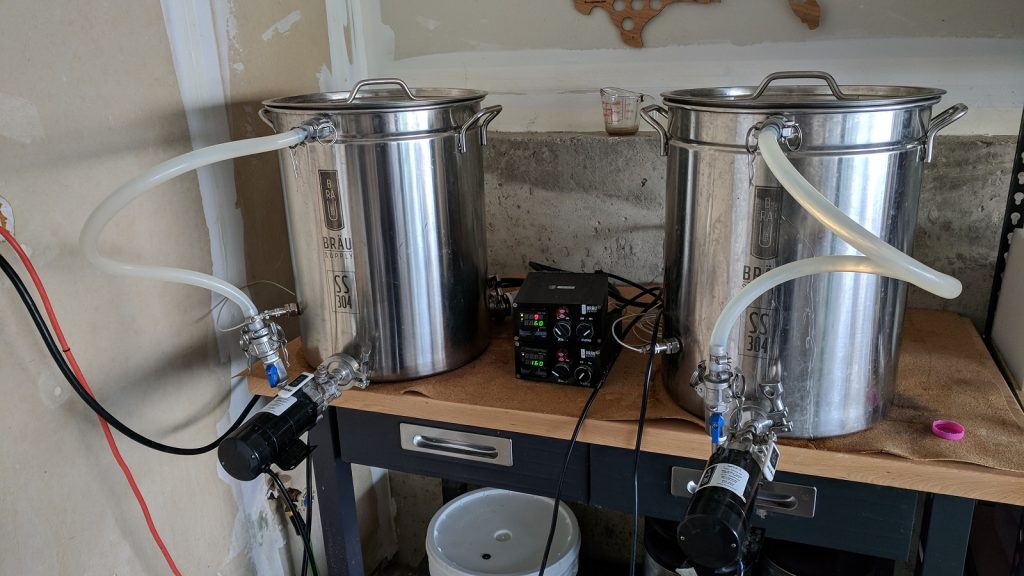
As the water was heating up, I weighed out and milled the grains for this batch, one including rye malt while the other had an equal amount of Pale Ale malt in its place.
Staggering the start of each batch by 15 minutes, I mashed in once the water was adequately heated and set the systems to recirculate before confirming both were at the same target mash temperature.
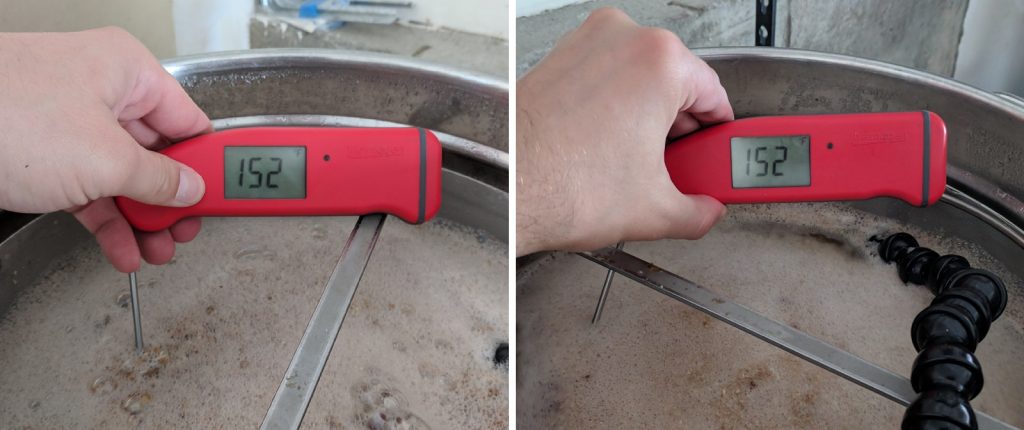
I grabbed samples of wort about 15 minutes into each mash for pH measurements and found them to be nearly identical (5.39 vs 5.40).
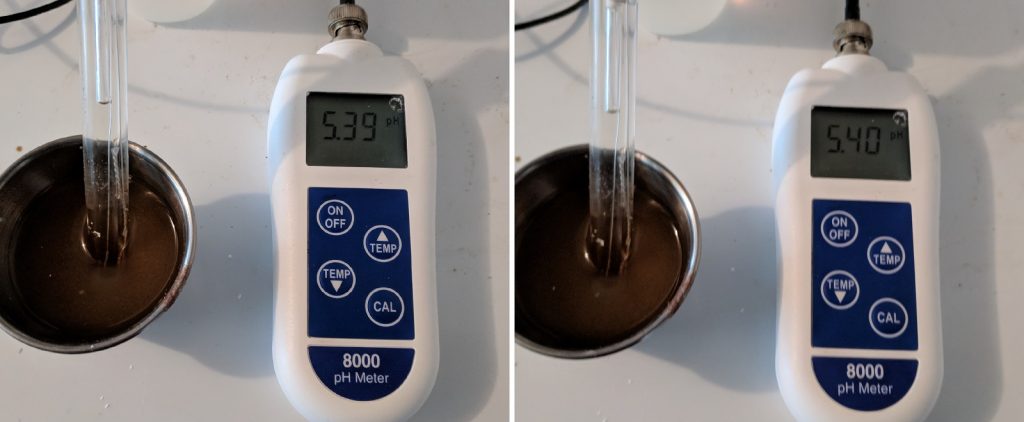
With each mash complete, I removed the grain baskets and began heating the worts, measuring out the kettle hop additions during the wait.
Each wort was boiled for 60 minutes with hops added at the times listed in the recipe.
Once the boils had finished, I ran the wort through my counterflow chiller directly into separate sanitized fermentors.
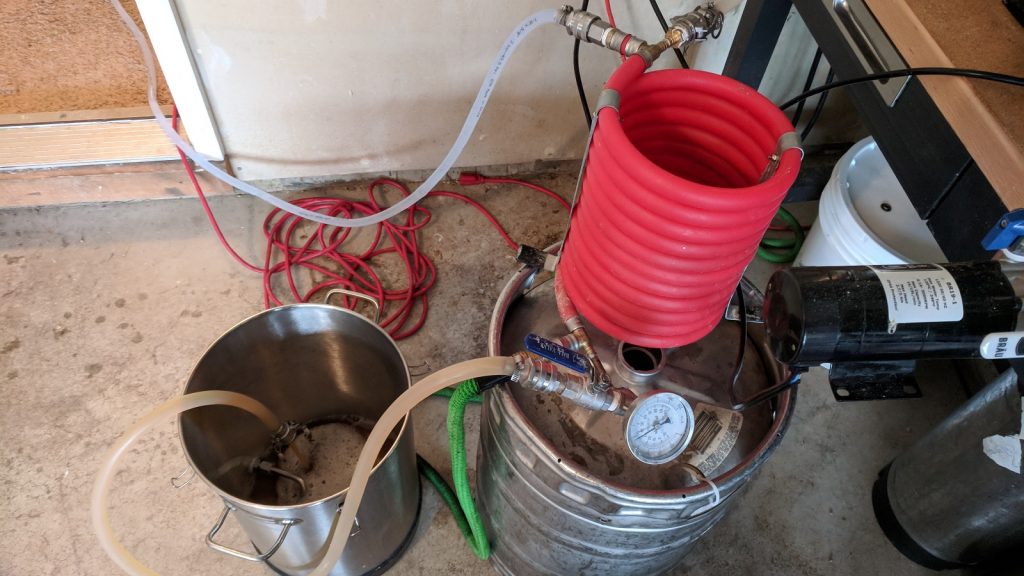
Hydrometer measurements showed the rye malt wort was ever so slightly higher in OG than the wort made with all pale malt.
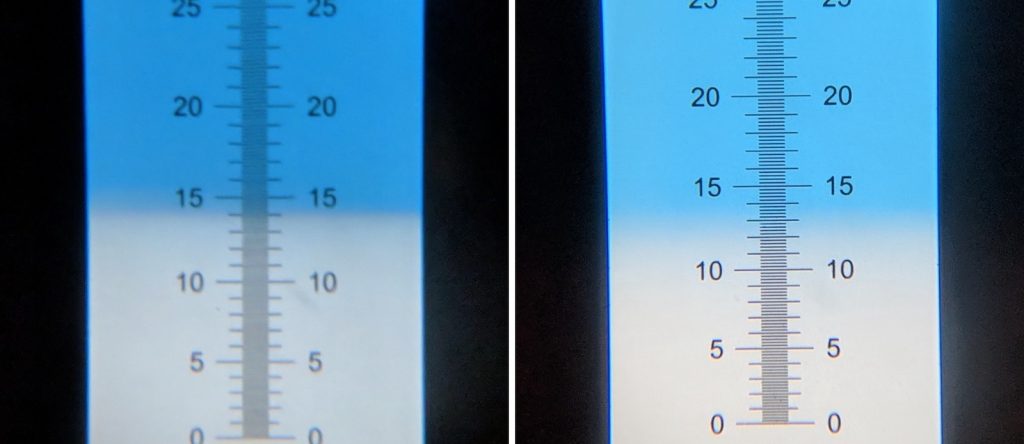
I let the worts finish chilling to my desired pitching temperature of 64°F/18°C before returning to pitch the yeast, each batch receiving half to the previously made starter. I noticed airlock activity from both batches within a few hours and left them alone for a week before adding the dry hop charge. After another 4 days, no activity was observed so I took hydrometer measurements indicating FG had been reached in both beers.
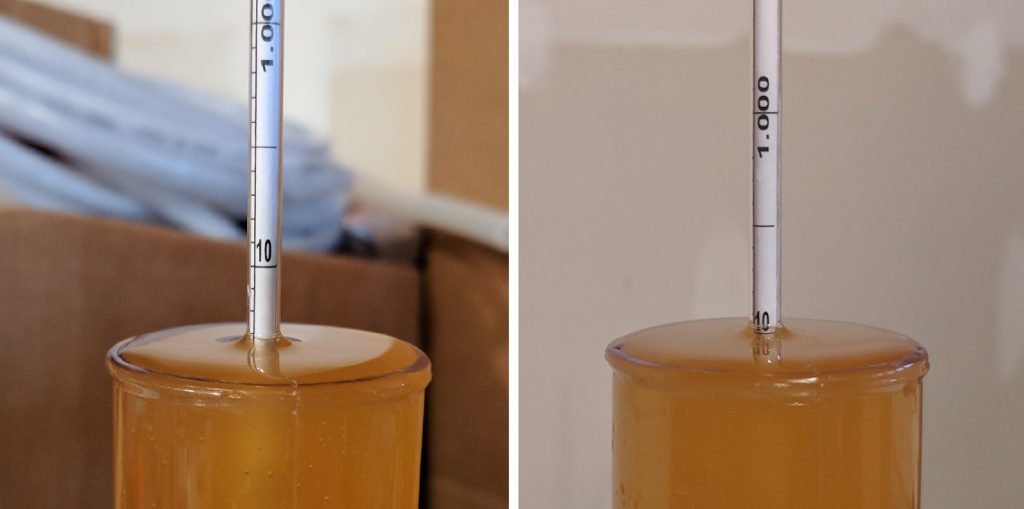
I proceeded with kegging the beers at this point.
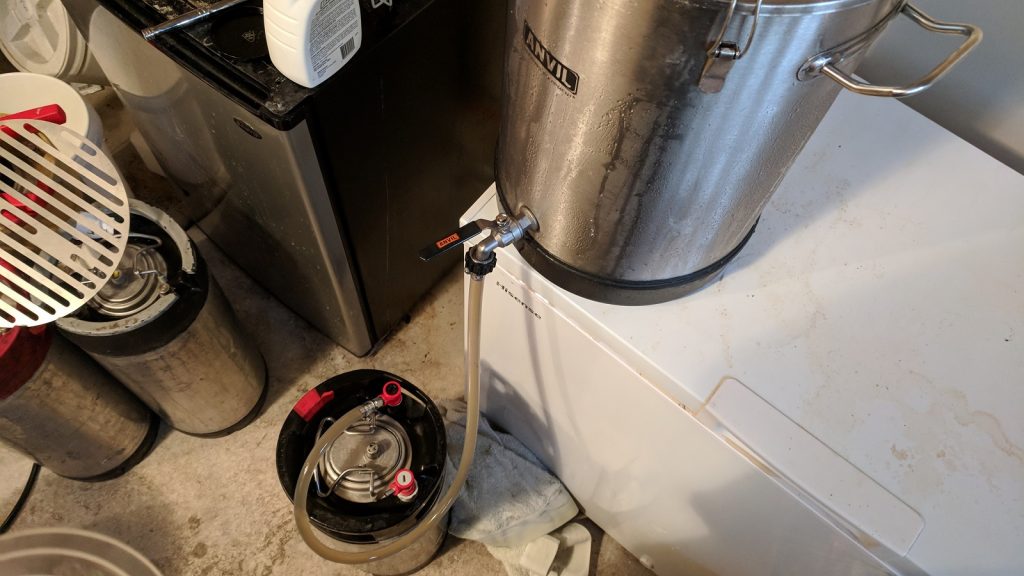
The beers were placed in my cool kegerator where each was fined with gelatin and burst carbonated. After a week of cold conditioning, the beers were carbonated and ready to serve to participants!
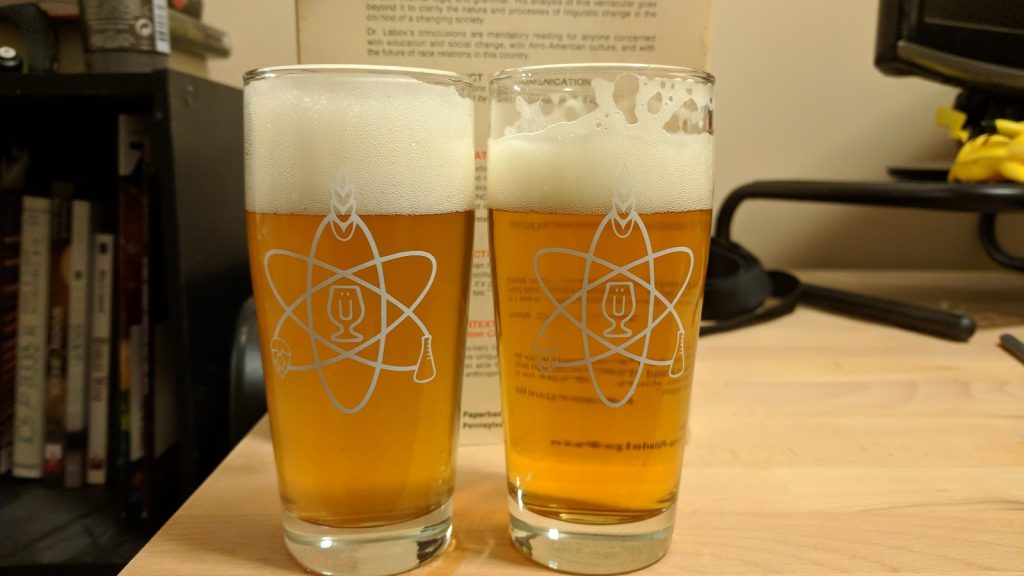
| RESULTS |
A total of 25 people of varying levels of experience participated in this xBmt. Each participant was served 1 sample of the beer made with rye malt and 2 samples of the beer made without rye malt in different colored opaque cups then asked to identify the sample that was unique. While 13 tasters (p<0.05) would have had to accurately identify the unique sample in order to reach statistical significance, 14 (p=0.016) were capable of doing so, indicating participants in this xBmt were able to reliably distinguish a beer made with rye malt from one where this grain wasn’t included.
The 14 participants who made the accurate selection on the triangle test were instructed to complete a brief preference survey comparing only the beers that were different. A total of 4 tasters reported preferring the beer made with rye malt, 5 liked the beer made without rye malt more, 3 people had no preference despite noticing a difference, and 2 tasters reported perceiving no difference.
My Impressions: Having never used rye malt before, or really rye in any flavor-forward capacity, I really didn’t know what to expect going into this xBmt. That said, out of the 3 semi-blind triangle tests I attempted, I identified the odd-beer-out every time. The beer were very similar, both had a strong malt backbone with notes of biscuit and cracker, and the hop character was seemingly identical too. However, I perceived the beer made with rye malt as having a more full mouthfeel and earthy character compared to the all pale ale malt version, it wasn’t very obtrusive, but it was apparent. In the end, I preferred the beer made without rye malt because of its simple, clean character.
| DISCUSSION |
Rye malt is used by brewers to add some depth and nuance to otherwise simple malt bills, meant to support the bitterness and hop character that comes with modern Pale Ale and IPA. Additionally, rye malt’s high beta glucan content is known to increase both wort and beer viscosity, lending the finished product increased body and smooth mouthfeel as well as improved foam stability. The fact participants in this xBmt were able to reliably tell apart a beer made with rye malt from one made without rye malt suggests this particular grain has a noticeable impact.
More objectively, these beers had some easily observable differences. Despite being fined with gelatin, the beer made with rye malt never quite cleared in the way the beer made with all Pale Ale malt did, possibly because of the contribution of beta glucans from the rye, which is purported to adversely impact clarity. Another difference was that the beer made with rye malt had a higher FG than the one made without, an observation that stumps me seeing as rye malt is modified.
When discussing this beer with participants after completing the survey, a few noted the beer made without rye malt tasted cleaner and had a more defined biscuit character than the rye malt version. Common descriptors of the rye malt beer included tea, spice, and herbal, some of which were likely influenced by the hops.
While I personally preferred the beer made without rye malt for its clean presentation, the rye malt beer did seem to have better mouthfeel and foam quality, and in no way was the beer bad. I can’t help but think rye malt would shine in a session beer where its impact on body would counter the thin mouthfeel that plagues may low ABV beers. I’ll definitely be experimenting more with rye malt in the future, but at this point, I don’t see it becoming a staple in any of my recipes.
If you have any thoughts about this xBmt, please do not hesitate to share in the comments section below!
Support Brülosophy In Style!
All designs are available in various colors and sizes on Amazon!
Follow Brülosophy on:
FACEBOOK | TWITTER | INSTAGRAM
If you enjoy this stuff and feel compelled to support Brulosophy.com, please check out the Support page for details on how you can very easily do so. Thanks!


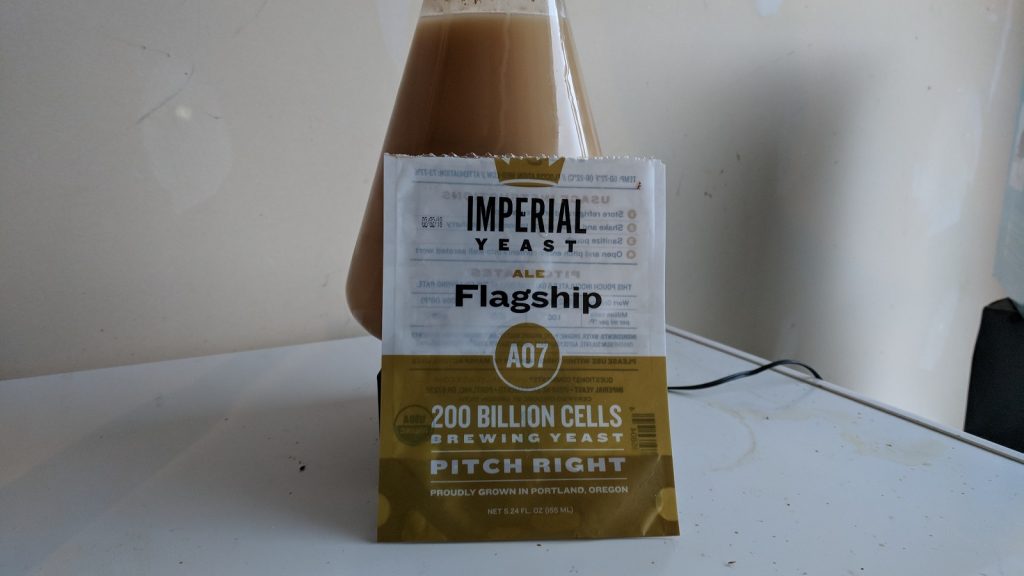
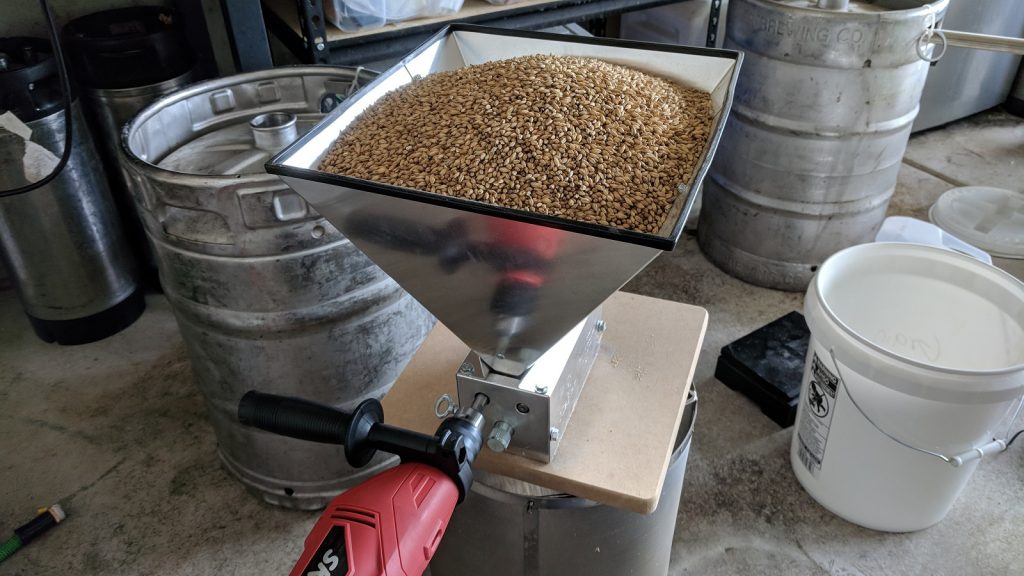
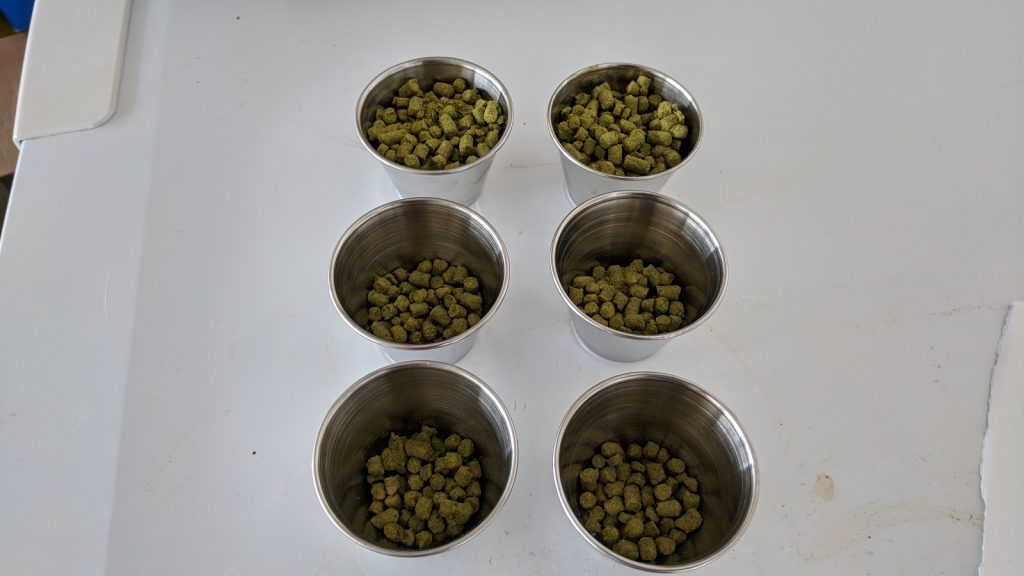
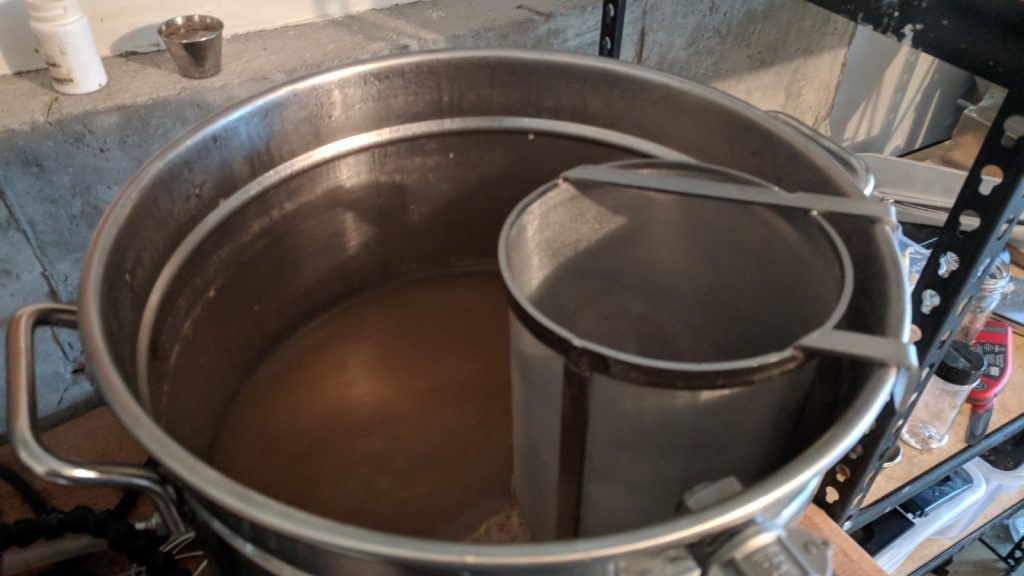











22 thoughts on “exBEERiment | Impact Rye Malt Has On American Pale Ale”
Hi there. While 15% of anything would be too much for some brewers, 15% of Rye malt is pretty low, especially when trying to figure out what Rye malt can bring into the beer. I brewed a few batches with 50% Rye malt – hoppy beers as well – and it was first then I started noticing what Rye malt can do, but I was surprised that I perceived no spiciness, although people claim it does.
Rye malt for me delivers, warm malty notes, and earthiness, which might be the spiciness and pretty good body and mouthfeel, but no way near as much as one would think. Regarding the spiciness – must be an old thing from times where Rye was most likely paired with noble-ish, spicy hops, etc.
Otherway, fine exbeeriment! Keep it up!
From what I’ve been reading, people tend to attribute Flaked Rye with the classic spicy rye character, and malted rye with that earthiness that you described here. I’ve also ben reading that some people suggest a blend of both for their beers to really get the rye contribution. Something I’d like to explore more.
I’d definitely like to continue working with rye malt in some capacity, though 15% certainly seemed to be enough for our tasters to notice!
The earthy taste for me is something I would describe more as a woody tang. I’ve found that rye’s presence increases over time on the back end of the taste profile, where after about 2 months or so it will dominate the beer’s after taste when used in excess of 20%.
I have submitted a few beers to BJCP competitions that were made with 20% to 40% rye and judges don’t seem to understand rye flavor, citing it as an off flavor every time, nor do they appreciate it as reflected in scores. A saison I made with equal parts rye, spelt, and barley was brutalized, low 20s due to perceived infection and oxidation by one judge.
I’ve never used flaked rye though, so I’ll give it a shot and see if it doesn’t add something different. Thanks for the write up.
What was the impressions from the 14 participants that were capable of identify the odd beer? Curious to know which one they liked most.
Unfortunately I don’t have access to that data, but I can tell you anecdotally that people tended to be pretty split on preference. Some homebrew friends mentioned that the beer with rye malt had a bit thicker mouthfeel, that the hops character was earthier (which I think may have just been the rye malt), and that the beer without the rye malt seemed cleaner. I liked both beers a lot, but found myself grabbing the no-rye beer more often.
Nice Exbeeriment Matt! I’ve been thinking about using rye in some of my recipes but hadn’t pulled the trigger yet so it’s nice to see how it made an impact. I know it’s not the most important piece and doesn’t really matter, but I kind of miss the preference data from those that got it right. Cheers!
Cheers, thanks Cory! I’ll definitely look into that preference data. The trick is presentation, since it isn’t really tied to the triangle in any way. Definitely something to consider as we move forward.
Nice work Matt! I like your idea for using rye in session strength beers. Do you think it would work well in English style beers? I’ve seen it used in saisons and IPA’s but I don’t recall seeing it in any English beers. Curious to hear your thoughts. I actually just had Sierra Nevada’s Ruthless Rye IPA last night so this article is timely. Really good beer btw. Cheers!
PS Do you think a Beta Glucan mash step could’ve helped with clarity? I know you have the capability. Maybe next time?
I’ll check that out! This xbmt has me more curious than ever about rye beers, I’ve never really sought them out.
Honestly I haven’t seen too much Rye in English recipes either. I can’t say with any degree of certainty when it would be appropriate from a style perspective, but based on this experience I think that malted rye has a place in a lot of styles, English included.
Also, it could have and I’d love to try it out.
Guiness’ Rye Pale Ale has a very English Ale taste to it, which does work well with the rye I think. I think I have preferred American Rye IPAs than Guiness’ Rye beer having said that. I have had a De Struise Rye Quad. I am thinking of including rye in my next quad. Any beer by de Struise seems to be a winner!
Very interesting as always. I find myself once again surprised that more people weren’t capable of picking the odd beer out considering the high percentage of rye being used. I also like the idea of using a small amount to add a bit of complexity, mouthfeel, and body in a session beer.
Honestly, I’ve heard from a few people that this was way too low a percentage of rye malt! Worth testing those boundaries.
And same, I’m considering a session IPL soon that will likely use roughly this percentage of rye malt.
I brewed an American Lager with Rye malt and Loral hops in it. Great all around flavor. Despite a moderately high apparent attenuation, the beer was quite full bodied. I like to think that has something to do with the Rye malt. Great Exbeeriment! What did you think of the Pekko hops? I bought some in bulk over the Summer and have only brewed with them once so far but the result was delicious.
Not directly related to the experiment but I noticed you changed the silicone tubing to a locline setup. Do you think it improved the recirculation? I’m thinking about doing the same…
Very interesting, thank you. I use rye in an APA and a a Bitter. I’m surprised that everyone couldn’t taste it. I have had tasters mistake it for hops or yeast using 10-15% rye malt or crystal rye. I like it very much, and others brewers or craft drinkers enjoy my Rye PA.
I’ve toyed around with rye while trying to perfect a Roggenbier and I never quite reached satisfaction. When I used rye (both flaked and malted) as over 40% of the grain bill, I found it to be very viscous in the finished beer. The mouthfeel is could be described as “slick” “oily” and I found that an extended conditioning in the keg only slightly improved it. I had a local brewery fill up a corny keg with his Roggenbier and I drank them side by side and noticed the same exact mouthfeel. He and I had a discussion about it and I learned that he also used about 40% rye in his grain bill. It’s a unique grain to brew with- for sure. I am not sure I will attempt a Roggen again and instead stick to RyePAs with a much lower percentage.
A rye IPA is my house beer now. Generally 20-25% rye, though I’ve started to split that between malted and flaked at a ratio of 75/25. The earthy character and mouthfeel compliment Cascade and high-alpha NZ hops.
The clarity is never parrticularly good until just before the keg is empty.
I never thought to try it in a session strength brew. I think I’ll try that next summer.
I never thought of using rye malt in my beer except chocolate rye, which is my substitute for Pale Chocolate Malt. As I read your exbeeriment, I wonder if malted rye could fit in thick stouts and neipas, and can substitute flaked / malted oats. I should try it next time…. Thanks for the insight!
the only experience with Rye Malt was when I brewed the Roz’ Red Rye Ale, which turned out quite nice! There was a lot going on in that beer, though, so it’s hard to tell what effect the rye had… Also, I see a hop chronicles Pekko coming soon 😉
I use rye a fair amount. Basic Brewing Radio has also done a number of shows on rye. Mostly I used it as a flavor, and generally less that 15%. But I also use it in very low ABV brews. In that use it works really well. 50% is a LOT of rye, over at BBR they did a 100% rye and while it tasted good the mouth feel was close to cough syrup. But that was in a normalish ABV beer. I have gone to 50% in sub 3% beers and it really helps fill them out. I went on a kick for awhile working on making sub 3% beers that tasted and felt like 5-7% beers. Basically you use rye (or wheat) for body and then you need a really malty grain to give you some malt character. In the end I don’t think I used any “normal” base malt, so combos like rye and honey malt in a 50/50 for a 3% beer. What gets really tricky is hops because the amount doesn’t go down linearly and IBU calculators don’t seem to reflect perception at really low ABV.
I’ve been a confirmed user of rye malt for years now. Just about every recipe we make contains at least 10% rye malt (if we’re not looking for a little bit of a rye ‘bite’), and closer to 20-25% if and when we are looking for that.
After thinking about this a lot, I think one of the main reasons that rye works so well is that it’s a single component that’s both malty _and_ somewhat bitter, so it “ties together” the two central components of any beer’s flavor profile.
The analogy I’ve used designing a well-balanced recipe is like using one of those long balance bars that tightrope-walkers use, with equal weights on the ends. Using rye is like those newer balancing bars, that also have a third small weight attached to the middle — that added central weight just helps stabilize the two far ends. (I know…there are all sorts of caveats with that analogy, but I think the basic point still bears.)
Interesting summary and comments. I am really curious if malted vs unmalted rye would be significantly different.